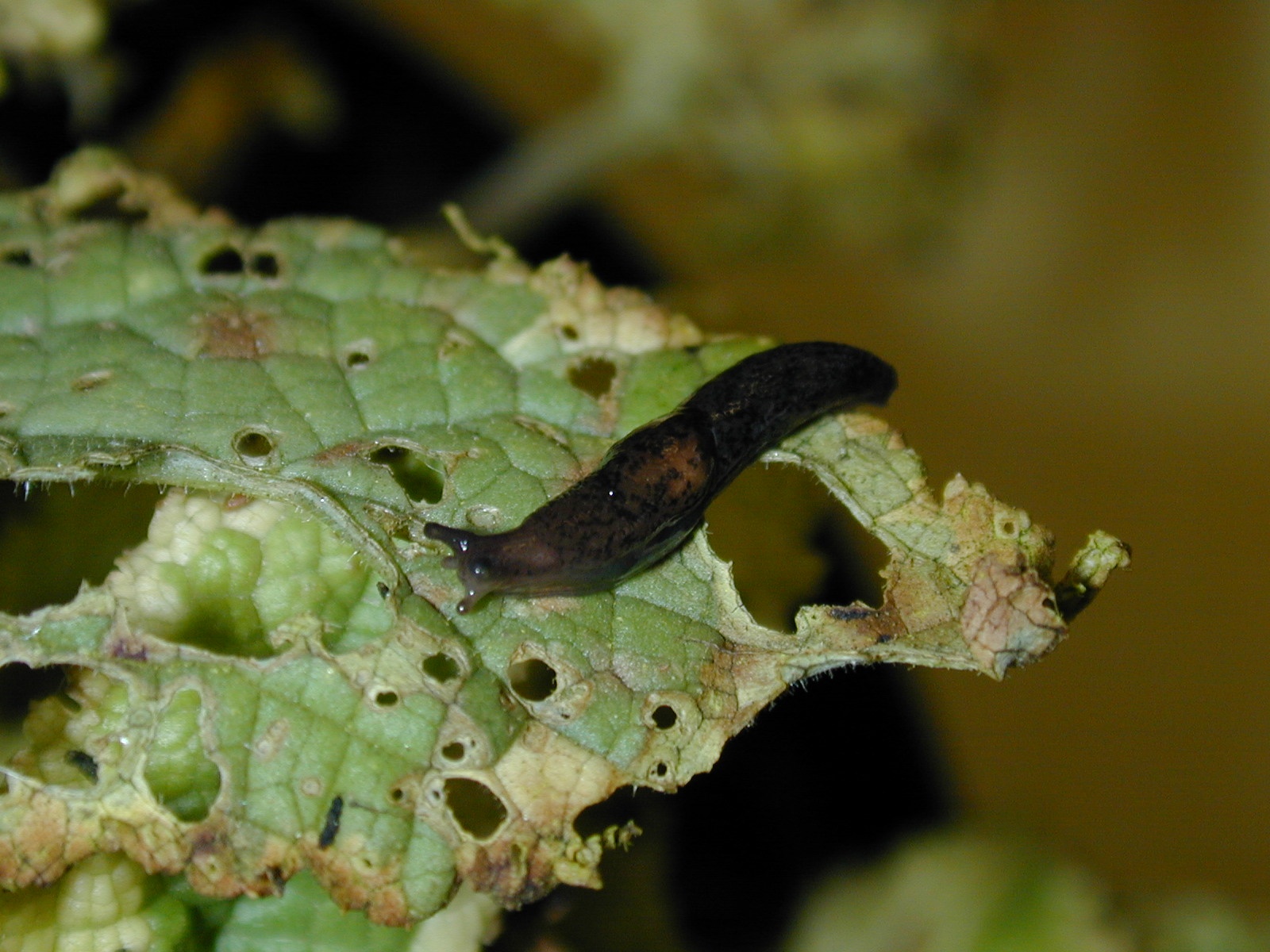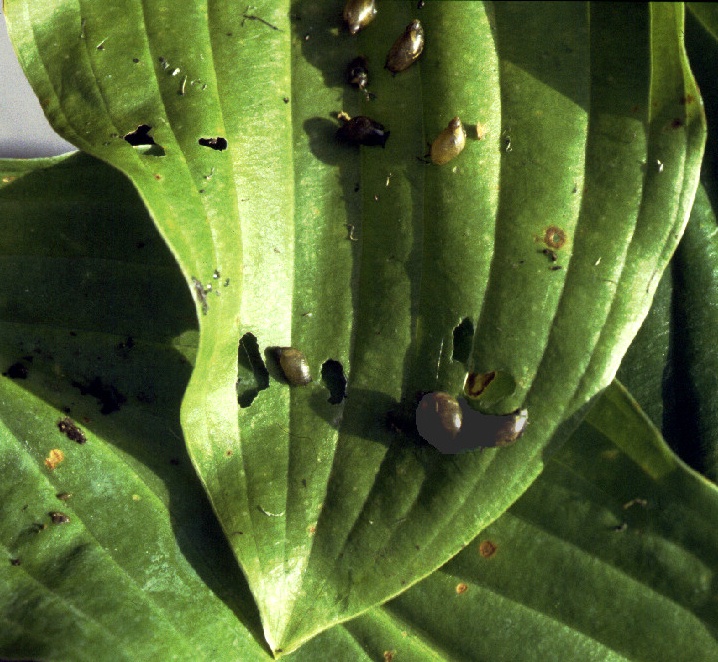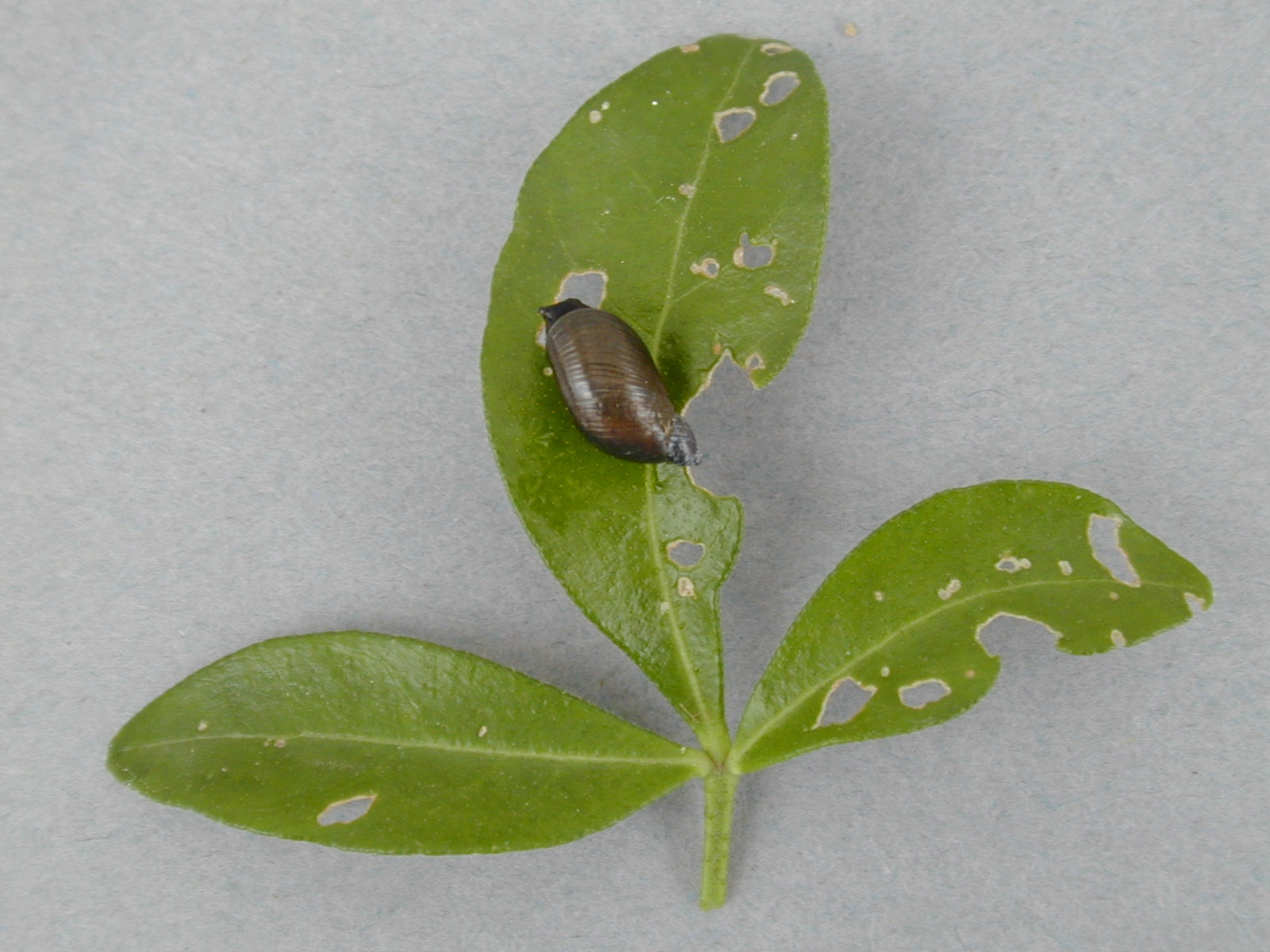Please click here to access the main AHDB website and other sectors.
- Home
- Knowledge library
- Slug and snail damage to hardy nursery stock
Slug and snail damage to hardy nursery stock
Recognise slug and snail damage symptoms on plants and which hardy nursery stock (HNS) species are commonly affected.
Back to: Integrated control of slugs and snails on hardy nursery stock
Slugs and snails can damage a wide range of hardy nursery stock species both under protection and outdoors, including shrubs and climbers, alpines, herbaceous, grasses and herbs.
Feeding by both slugs and snails can lead to irregular, ragged holes in the leaves and leaf shredding. Holes caused by Oxyloma elegans tend to be smaller than those caused by slugs.
In project HNS 105, the following were commonly damaged shrub species:
- Arbutus
- Choisya
- Cytisus
- Daphne
- Elaeagnus
- Euonymus
- Fatsia
- Lavatera
- Magnolia
- Photinia
- Sambucus
- Syringa
- Yucca
Climbers damaged included:
- Clematis
- Hedera
Grass species damaged included Acorus and herb species damaged included basil, mint, thyme and sage.
Alpines and herbaceous plants damaged included:
- Anemone
- Ajuga
- Aubretia
- Campanula
- Cordyline
- Coreopsis
- Delphinium
- Doronicum
- Hemerocallis
- Hosta
- Houttuynia
- Iris
- Lupin
- Meconopsis
- Nemesia
- Osteospermum
- Phormium
- Saxifrage
- Scrophularia
- Vinca
- Viola
Deroceras invadens – feeding damage on Scrophularia leaf
Image courtesy and © ADAS RSK.
Oxyloma elegans – feeding damage on Hosta leaf
Image courtesy and © ADAS RSK.
Slugs can also sever young seedlings and soft leaf petioles such as those of Hosta and damage underground plant organs such as tubers and crowns. Slime and faecal trails can sometimes be seen on damaged plants. Both the feeding damage and the presence of slugs and snails on finished plants can lead to losses or downgrading due to retail quality demands.
In project HNS 105, O. elegans fed on soft-leaved herbaceous plants including Campanula, Hosta and Viola and also on some tougher-leaved perennials like Phormium and Euonymus. However, they did not damage certain other species including Choisya and Hedera, although they are often found on these species on nurseries, so it is possible that they damage leaves of these plants when they are young and soft.
Useful links
Author
Author(s) – Jude Bennison and David Talbot, ADAS Horticulture.
Original author(s) – Jude Bennison, ADAS Horticulture.
Got a question? Ask a member of the team:
Webpage content correct as of March 2021.
Oxyloma elegans – on damaged on young Choisya leaf
Image courtesy and © ADAS RSK.
Topics:
Sectors:
Tags:




